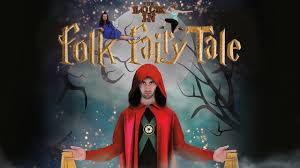Blog 2
Have you ever heard of the saying think outside the box? Well that is what folk and fairy tales are all about, if you are narrow minded often times you may miss the messages that folk and fairy tale stories are giving.
In my opinion, folk and fairy tales are childhood stories about magic and a world that has more things than the eye can see. A folk or fairy tale is a development of one’s imagination through stories. Folk and fairy tales force people to expand their mindset or else the stories will be no fun. One must believe in potions, witches, magical creatures, and supernatural beings because it creates a reality for the stories. One must believe that there is a world deeper than the one the eye can see; one must understand that odd things will occur and that is normal.
 Folk and fairy tales are also very great for a child's development. Regular stories and novels set a regulation for how the story’s plot, ending, and imagery must look throughout the entire story. Folk and fairy tales allow children to create their own perception of what the plot is about, meaning behind the imagery, and the ending of the story. There is no right or wrong answer with how you believe the story should be; this then creates even more creative folk and fairy tales because when the children grow older, they tell the stories in the way that they perceived them when they were young.
Folk and fairy tales are also very great for a child's development. Regular stories and novels set a regulation for how the story’s plot, ending, and imagery must look throughout the entire story. Folk and fairy tales allow children to create their own perception of what the plot is about, meaning behind the imagery, and the ending of the story. There is no right or wrong answer with how you believe the story should be; this then creates even more creative folk and fairy tales because when the children grow older, they tell the stories in the way that they perceived them when they were young.
Children begin to think outside of the box as they are older because while they younger their mindset was far from average. For example, take a look at the story of The Brothers Grimm, if Jacob did not read folk and fairy tales while he was younger, he would have been narrow minded like his brother, Wilhelm, and they would have never solved the mystery behind the missing girls. Even though, The Brothers Grimm, is just a story the imagination that kids develop while they are young can create change in the actual world; things such as cures for disease, designs for new buildings, and improvement of life all around comes from people using their imagination and thinking outside of the ordinary.


Comments
Post a Comment